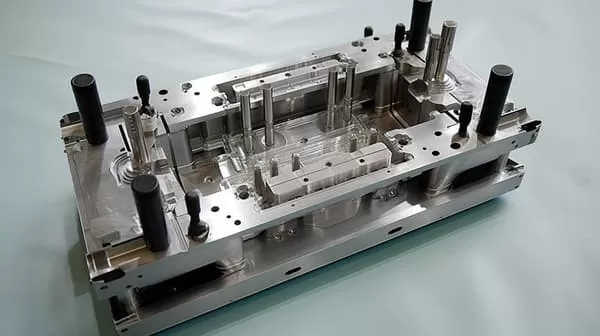Mass production of PVC (Polyvinyl Chloride) products requires careful planning and design to ensure consistent quality, reduced cycle times, and minimal manufacturing costs. PVC mold optimization plays a crucial role in achieving these goals. Below is an in-depth look at the key considerations and strategies for optimizing PVC mold design for large-scale production:
1. Understanding Material Behavior
PVC has unique processing characteristics compared to other thermoplastics:
Thermal sensitivity: Degrades if overheated, releasing hydrochloric acid.
Shear sensitivity: Excessive shear can lead to material breakdown.
Viscosity: Varies significantly with temperature and additives.
Optimization Tip: Select mold materials and temperature control systems that can precisely maintain processing windows to avoid degradation.
2. Mold Material Selection
For mass production, mold durability and thermal conductivity are essential:
Preferred materials: Hardened tool steel (e.g., H13, P20) offers wear resistance.
Cooling efficiency: Copper alloys may be used in inserts for faster heat dissipation.
Optimization Tip: Use hybrid mold materials to balance cost, strength, and thermal performance.
3. Gate Design and Placement
PVC’s flow behavior requires thoughtful gate selection:
Types: Fan gates and edge gates are preferred for better flow distribution.
Placement: Should promote uniform filling and avoid weld lines or air traps.
Optimization Tip: Simulate flow with software (e.g., Moldflow) to optimize gate design before cutting steel.
4. Ventilation and Degassing
Due to PVC’s tendency to trap air and release gases during heating, venting is critical:
Design vents at the end of flow paths and parting lines.
Use vacuum venting where necessary to improve filling and part quality.
Optimization Tip: Maintain tight tolerances in vent dimensions (0.02–0.05 mm deep) to avoid flash.
5. Cooling System Efficiency
Cycle time is largely dictated by cooling. In mass production, optimized cooling:
Reduces warpage and shrinkage
Minimizes cycle time
Improves dimensional accuracy
Optimization Tip: Use conformal cooling channels created via 3D printing to enhance uniformity and efficiency.
6. Ejection System Design
PVC parts may stick due to shrinkage:
Use multi-point or stripper plate ejection for even force distribution.
Apply surface coatings (e.g., chrome plating) to reduce friction.
Optimization Tip: Design ejection paths early in the process to avoid redesigns and ensure part integrity.
7. Surface Finish and Texture
For high-volume products, mold surface finish affects:
Part appearance
Demolding ease
Cleaning and maintenance
Optimization Tip: Use polished or textured surfaces as per product requirements while considering mold release behavior.
8. Cycle Time Reduction Strategies
Key tactics to minimize cycle time in PVC molding:
Hot runner systems (when applicable) to reduce material waste
Sequential valve gating for complex geometries
Pre-heating molds before starting large runs
Optimization Tip: Balance speed with part quality—don’t over-prioritize cycle time at the cost of dimensional tolerance or finish.
9. Maintenance and Mold Life
PVC is slightly corrosive and abrasive depending on fillers:
Apply anti-corrosion coatings on molds.
Schedule preventive maintenance to extend mold life.
Optimization Tip: Use modular mold designs for easy replacement of worn components.
10. Design for Manufacturability (DFM)
A DFM approach ensures:
Easy moldability of parts
Consistent quality
Lower tooling costs
Optimization Tip: Involve mold designers early in product development to avoid costly redesigns.
Conclusion
Optimizing PVC mold design for mass production requires a multidisciplinary approach combining material science, thermal management, mechanical design, and manufacturing best practices. Leveraging advanced simulation tools and adopting a proactive design-for-manufacture philosophy can significantly enhance productivity, reduce defects, and lower overall production costs.


